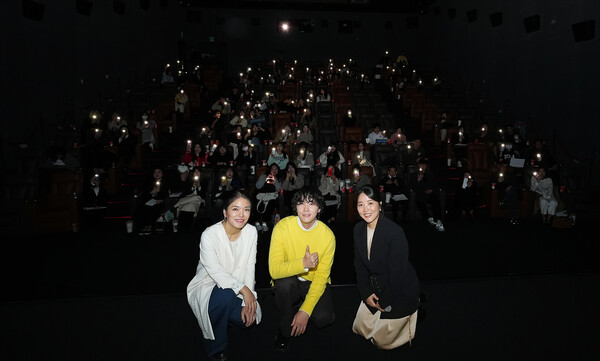For years, Lee Hong-ki had been hiding a secret. As the lead vocalist of Korean boy band F.T. Island, he was constantly on screen, performing, appearing on variety shows. But if you watch closely, you might catch it: a slight shift in his seat, a brief disappearance. No one ever asked why. He never explained. The truth was, he was in pain.
It started small—a swelling here, a sting there. Then, during one shoot, he felt something burst. A sharp pain spread across his lower body. He clenched his jaw, stayed still. The cameras kept rolling. By the time the director called "cut," he could barely stand.
A doctor told him it was an infection. Antibiotics. Anti-inflammatories. Come back if it gets worse.
It got worse.
The boils returned, burrowing deeper, tunneling under his skin. The pain was constant now, a dull throb that flared without warning. He stopped asking doctors for answers. They never had them.
“They just called it boils,” Lee said. “I would say, 'No, it’s not just that.' But how do you even explain it? You try, and people don’t get it. They think you’re being dramatic.”
For years, he kept it to himself. As a trainee, his bandmates—now his closest friends—had no idea. The people around him assumed he was fine. He wasn’t. “I had to plan for it,” he said. “Spare clothes. Sponges, just to cushion the pain. It sounds ridiculous, but I had no choice.”

He had no name for it at the time. Then, years later, he did: hidradenitis suppurativa, or HS.
The disease affects an estimated 1 in 100 people, but many go undiagnosed for years. It doesn’t just sit on the surface—it tunnels deep under the skin, causing severe abscesses, scarring, and, in some cases, an odor that is impossible to ignore. Patients are often misdiagnosed or dismissed altogether.
“By the time they find me, most of my patients have already spent years being misdiagnosed,” said Kim Hye-one, a dermatology professor at Hallym University. “They’re told it’s acne. An infection. Maybe they just need to wash better. And by then, they’ve started to believe it. They think it’s their fault.”
HS usually begins in adolescence, making it even harder for young patients to advocate for themselves. The pain, Kim said, is often described in excruciating terms—burning, stabbing, pulling, slicing, like being eaten away. A global study of 1,299 HS patients found that most rated their pain as moderate or severe, with 4.5 percent calling it the worst pain imaginable.
At a pre-screening event for “A Normal Day,” hosted by Novartis Korea on Thursday at CGV, the country’s largest cinema chain, Lee listened in silence, nodding occasionally as Kim spoke. His expression stayed neutral, but he knew every word rang true.
“When a flare-up happens, the pain is unbearable,” he said. “At that moment, you have no choice but to tell people. I even reached the point where I’d say, ‘Do you want me to show you? Would you believe me then?’”
That exhaustion—of constantly explaining, of trying to be believed—is at the heart of the short film, which follows Eun-ji, a radio scriptwriter with HS.
The details are unremarkable to anyone else but relentless to her: the slow spread of blood on a shirt, the moment she notices—too late—the stain setting in. The choice to stand because sitting is unbearable. The quiet exhaustion of explaining, over and over, that no, it’s not just bad hygiene.

“These moments aren’t emergencies,” Lee said. “But they add up. The small humiliations. The constant explaining.”
Kim recalled one scene in particular that struck her. “There’s a moment when Eun-ji is alone in a dimly lit room, talking to herself,” she said. “That scene stood out to me because it mirrors what so many patients experience. The way the pain was depicted—even though it was just a brief moment—was striking.”
“When we held the storytelling workshop, nearly every patient had a story like this,” a Novartis Korea spokesperson noted during the event. “So much of the stigma comes from misunderstanding.”
For Lee, “A Normal Day” is a small step toward correcting that. “I used to say that my biggest insecurity was my lower body because of this disease,” he said. “It caused me so much stress and pain. But back then, I kept quiet. I shouldn’t have.”
In December 2023, Novartis Korea launched the Shine a Light on HS campaign with Lee. As part of the initiative, a storytelling workshop was held in August 2024, bringing together HS patients, dermatologists, and art therapists to share experiences and offer support. The film, released in March 2025, was born from those stories.
Kim, who has spent years treating HS patients, remains hopeful. “HS is a severe, chronic condition, but over the past decade, research has progressed significantly,” she said. “Among dermatological diseases, this is one of the fastest-evolving fields. Treatment is improving, but awareness is still lagging.”
Lee, too, sees a future that is more open, less isolating. There’s no cure. No guarantee it won’t get worse. But at least now, he doesn’t have to pretend it isn’t happening.
Related articles
- Novartis Korea expands indication for chronic myeloid leukemia treatment Scemblix
- European guidelines recommend Cosentyx as 1st-line drug for severe hidradenitis suppurativa
- Novartis ranks 1st among global pharma in patent registration, clinical trials in Korea
- Novartis' oral drug Fabhalta rises as strong contender in PNH market
- Daewoong Pharm launches Humira biosimilar targeting autoimmune disease market
- Korea green-lights Novartis’ Cosentyx for kids with severe psoriasis
- Social isolation during adolescence causes brain damage: study
- Hidradenitis suppurativa: New drugs have emerged, but patients face a reimbursement barrier

